The numbing predictability of the Istanbul tragedy
Istanbul, Jan 18, 2016 -- It’s conventional after attacks to express surprise and shock. But when a suicide bomber ripped through a group of German tourists on Tuesday morning last week in central Istanbul the shock was genuine, but no-one could feign surprise. This was the attack that everyone had feared.
Attacks blamed on Islamic State (IS) jihadists had struck Turkey three times in 2015 -- once in Diyarbakir, once in the town of Suruc on the Syrian border, and then in Ankara where 103 people were killed in modern Turkey’s bloodiest ever attack.
 Victims of the Ankara bombing on October 10, 2015. (AFP / Fatih Pinar)
Victims of the Ankara bombing on October 10, 2015. (AFP / Fatih Pinar)An expected strike
It would only be a matter of time, we thought to ourselves, until terror struck in the heart of the milllenia-old, messy, overcrowded, cosmopolitan and enchanting metropolis that is Istanbul, possibly targeting one of the busiest tourist areas.
And this is what happened when Nabil Fadli, a 28-year old Syrian reportedly born in Saudi Arabia, detonated his charge on January 12 at 10:20 in the morning, just a few yards away from the iconic Ottoman-era Blue Mosque in the Sultanahmet Square, the tourist hub of the city.
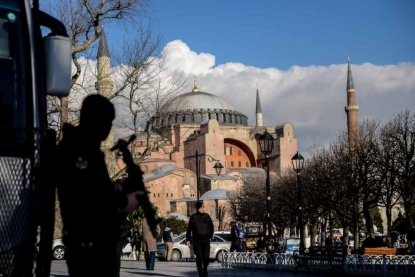 A Turkish riot police officer stands guard two days after the Istanbul attack. (AFP / Ozan Kose)
A Turkish riot police officer stands guard two days after the Istanbul attack. (AFP / Ozan Kose)Sometimes at night I look out over the lights on Istanbul’s fabled skyline and wonder what is lying beneath this glittering beauty. We have long been aware of the existence of jihadist sleeper cells in Turkey comprising extremists who have spent time, gained bomb-making knowledge and been radicalised in Syria.
It was a question of where, when and how they would act. The city has been on edge for months, but particularly after the Ankara attacks. Walking in especially crowded areas, like Taksim Square or the packed Iskitlal Street, you feel constantly on alert. The Turkish authorities unquestionably have stepped up efforts in the last weeks to crack down on these cells, detaining hundreds of suspected jihadists.
The bomber exploded his charge right next to one of the most extraordinary sights in the entire city, the Obelisk of Theodosius. It’s a large column of stone commissioned by the pharaohs in the second millenium BC which was then shipped to the city by Roman Emperor Theodosius in the late fourth century AD. A magnificently sculpted base was added glorifying his own achievements, including the erection of the column.
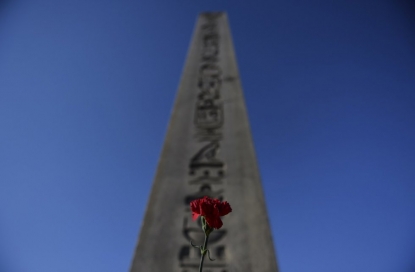 The Obelisk of Theodosius at the site of the Istanbul attack. (AFP / Bulent Kilic)
The Obelisk of Theodosius at the site of the Istanbul attack. (AFP / Bulent Kilic)Normality returns, fear remains
Many times I had visited the column, to wonder at the hands that touched these stones, which have survived as generation after generation passed away and empires rose and fell. Probably the German tourists were thinking much the same when the horror struck.
The reaction of many in the city after the bombing, so early in the new year, was a numb fear: when will this happen again?
For now, no doubt encouraged by the municipal authorities, a semblance of normality has returned to the area. There are moving messages on the railings of the monument, which has been festooned with red carnations and adorned, most touchingly, by several football scarves of the popular German Bundesliga side. Guides can be heard rattling off the history of the monument, tourists hesitatingly take photographs, wondering if the site of the blast truly makes an appropriate holiday snap.
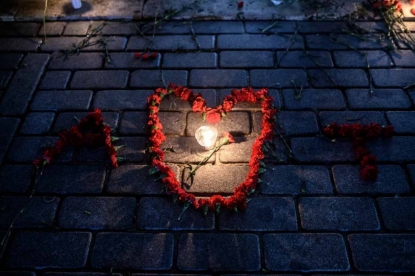 A makeshift memorial to the victims of the Istanbul attack. (AFP / Ozan Kose)
A makeshift memorial to the victims of the Istanbul attack. (AFP / Ozan Kose)I believe the Turkish authorities were genuinely horrified by the attack and worried for its consequences, notably for the tourism industry. To their credit, the magnitude of the death toll and the nature of the blast was rapidly made clear in official statements. Strangely, it took some time however to make clear that all the dead were Germans, as if the fact that tourists from one single, key partner nation had been targeted (by design or accident) was just too much to take in at once.
 Emergency personnel at the scene of the attack. (AFP / stringer)
Emergency personnel at the scene of the attack. (AFP / stringer)Far less welcome was the news, hours after the bombing, that the authorities had slapped a so-called “broadcast ban” on coverage of the event. For an hour or so, this seemed to halt all live broadcasting from the scene. I saw one channel, its news ticker screaming red with the death toll, but showing pictures of a feature about scuba diving.
But in Turkey, the lines are never crystal clear. By their 1:00 pm news bulletins, all channels, including pro-government ones, appeared to have shaken off the absurdity of the broadcast ban and were broadcasting live from the scene.
 Police stand guard at the site of the Istanbul attack. (AFP / Bulent Kilic)
Police stand guard at the site of the Istanbul attack. (AFP / Bulent Kilic)Authorities keep focus on PKK
President Recep Tayyip Erdogan reacted swiftly to the news of the bombing, using a speech to Turkish ambassadors in Ankara to condemn it in unequivocal terms and confirm the bomber was of Syrian origin. But surprisingly, Erdogan did not dwell on the issue, spending much more time in a long and sometimes rambling address talking about Turkey’s fight against Kurdish militants.
Turkey’s offensive against the Kurdistan Workers Party (PKK) launched in July is hugely controversial, with rights groups saying dozens of civilians have been killed, in particular in a succession of curfew operations since December which have seen three areas placed under a military lockdown to flush out the militants.
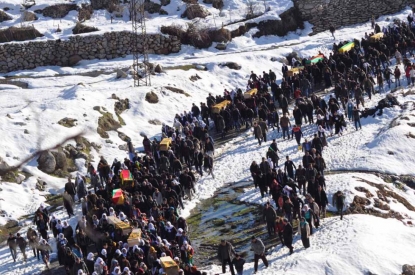 A funeral procession on January 12 for those killed during curfews in Turkey's restive southeast. (AFP / stringer)
A funeral procession on January 12 for those killed during curfews in Turkey's restive southeast. (AFP / stringer)In typically combative form, the president then went on to take aim at over 1,000 Turkish academics and dozens of foreign professors (including the American linguist Noam Chomsky) who had signed a petition condemning a military crackdown in the Kurdish-dominated southeast. Refusing to let go of the issue, Erdogan launched a new attack against the academics on Thursday. By Friday several had been arrested as part of an investigation into alleged propaganda for a terror group.
The police have already made seven arrests over the Sultanahmet attack but the focus on a written petition seems a strange balance at a time when there is a such a concrete threat from extremists. The authorities have always made clear they make no distinction between IS and the PKK, which was blamed for a blood-curdling attack in the southeast overnight Wednesday to Thursday that killed six people, including three children.
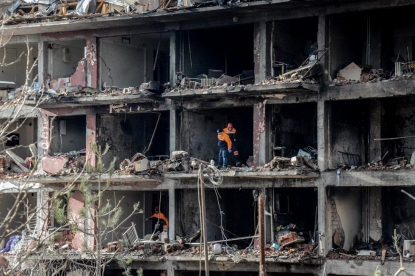 Rescuers search through wreckage after a blast killed six in southeastern Turkey on January 14. (AFP / Ilyas Akengin)
Rescuers search through wreckage after a blast killed six in southeastern Turkey on January 14. (AFP / Ilyas Akengin)In the meantime, fear and alarm will stalk the streets of Istanbul and many other Turkish cities. It has been noted repeatedly that IS has never claimed an attack in Turkey, in contrast to its usual brazen boasting about strikes elsewhere. We don’t understand how the group operates inside Turkey and what its specific objectives are. But Istanbul’s residents, and its visitors, many of whom fall so in love with the place they come time-and-time again, will be determined to continue as normal in the fact of this uncertainty.
Stuart Williams is AFP’s deputy bureau chief in Turkey, based in Istanbul. Follow him on Twitter.
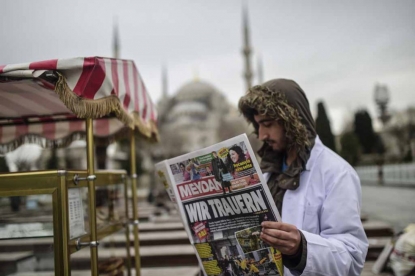 A headline in German reads 'We mourn" in a Turkish newspaper the day after the Istanbul attack. (AFP / Bulent Kilic)
A headline in German reads 'We mourn" in a Turkish newspaper the day after the Istanbul attack. (AFP / Bulent Kilic)
